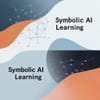The article opens by laying out two foundational paradigms in artificial intelligence: symbolic AI (often called GOFAI — Good Old-Fashioned AI) and machine learning. Symbolic AI, which dominated early AI research in the 1950s–80s, is based on rule-based systems and logic: the idea that human reasoning can be replicated by manipulating symbols according to explicit rules. Machine learning, by contrast, emerged from a data-driven mindset: instead of coding every rule, let systems learn patterns from large datasets.
Symbolic AI excels in domains where knowledge is structured and rules are clear: for instance expert systems in medicine or legal reasoning, where the logic can be specified. Its strength lies in transparency and interpretability: you can trace why a decision was made because the rules are written out. However, the article points out the limitations: symbolic AI struggles with ambiguity, unstructured data, scale and learning new patterns without manual rule creation. Machine learning shines in those areas—image recognition, natural language, pattern detection—but often at the cost of interpretability and control.
The article then explores how the two approaches differ in key dimensions: e.g., data requirements (symbolic systems need less data but more hand-coded expertise; machine learning often needs huge datasets), adaptability (machine learning can generalize from new data, symbolic systems need new rules), interpretability (symbolic = high, machine learning = often “black box”). The article uses diagrams and examples to highlight that neither approach is universally superior—they are complementary.
In its conclusion, the piece argues the future of AI isn’t about choosing one paradigm over the other but about hybrid/neurosymbolic systems: combining the structured reasoning of symbolic AI with the pattern-recognition and learning power of machine learning. It suggests that the next wave of breakthroughs will come from architectures that can both learn from data and reason about what they’ve learned—bridging the gap between “knowing patterns” and “understanding concepts.”


